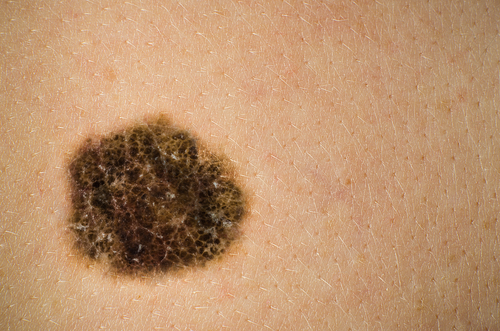Nevi, or skin moles, are strongly associated with melanoma. But recent findings revealed that most melanoma patients have few and no atypical moles, and thick melanomas in people under age 60 are more often found in those with fewer but more atypical moles. The article, titled “Total Nevi, Atypical Nevi, and Melanoma Thickness An Analysis of 566 Patients at 2 US Centers,” was published in JAMA Dermatology.
Previous studies have revealed that the number of moles, or total nevi (TN), and of atypical nevi (AN) is a risk factor for melanoma. However, the association of these distinctive mole patterns with tumor thickness and cancer prognosis is unclear and appears to be complex. The presence and number of TN and AN are known to vary by age and sex, but it is not known how these findings relate to the severity and outcome of melanoma.
To study the association between age and TN/AN number, and to explore the potential association between TN or AN and tumor thickness, Alan C. Geller, MPH, RN, of the Harvard T.H. Chan School of Public Health, Boston, and colleagues conducted a survey of 566 patients with melanoma at two academic sites and an affiliated Veteran Affairs medical center.
Results found that the majority of the patients (66.4 percent or 376) had zero to 20 total moles, while 73.3 percent (415 patients) had no atypical moles. In patients younger than age 60, the presence of more than 50 TN was associated with a reduced risk of thick melanoma. Also, the presence of more than five AN, compared with no AN, was associated with thicker melanoma.
“Several public health messages emerge from our study, including that melanomas are more commonly diagnosed in individuals with fewer nevi compared with those with a high mole count. Therefore, physicians and patients should not rely on the total nevus count as a sole reason to perform skin examinations or to determine a patient’s at-risk status. Younger patients should be educated on the increased risk of thicker melanomas that is associated with having more AN,” the researchers concluded in a press release.


